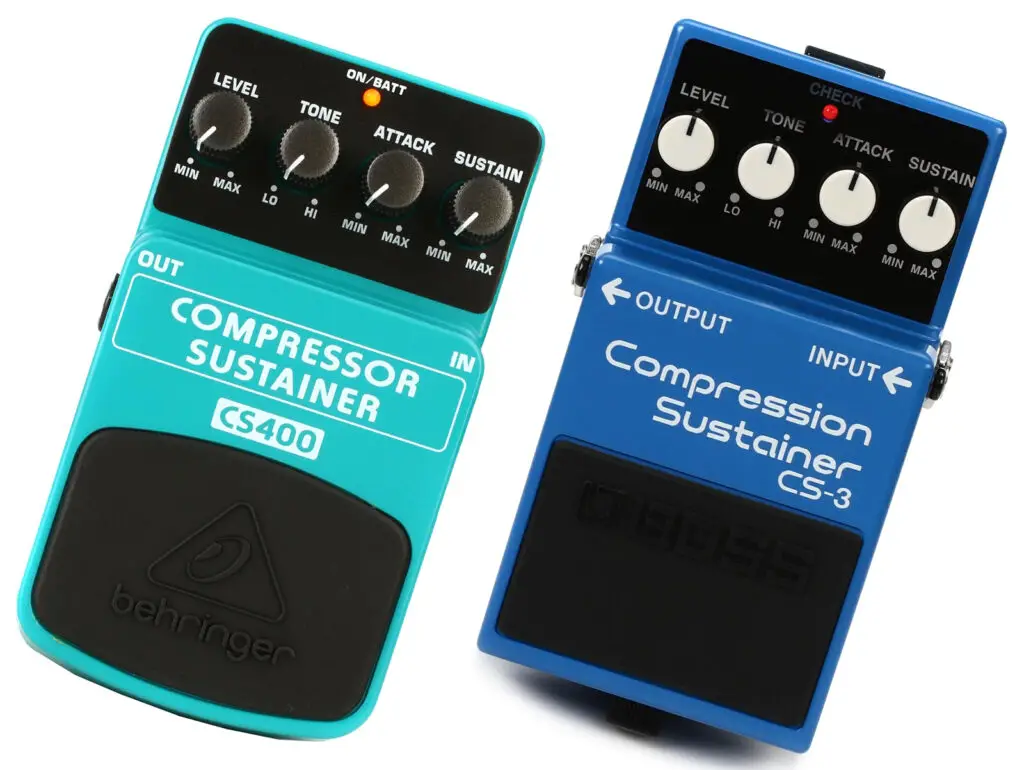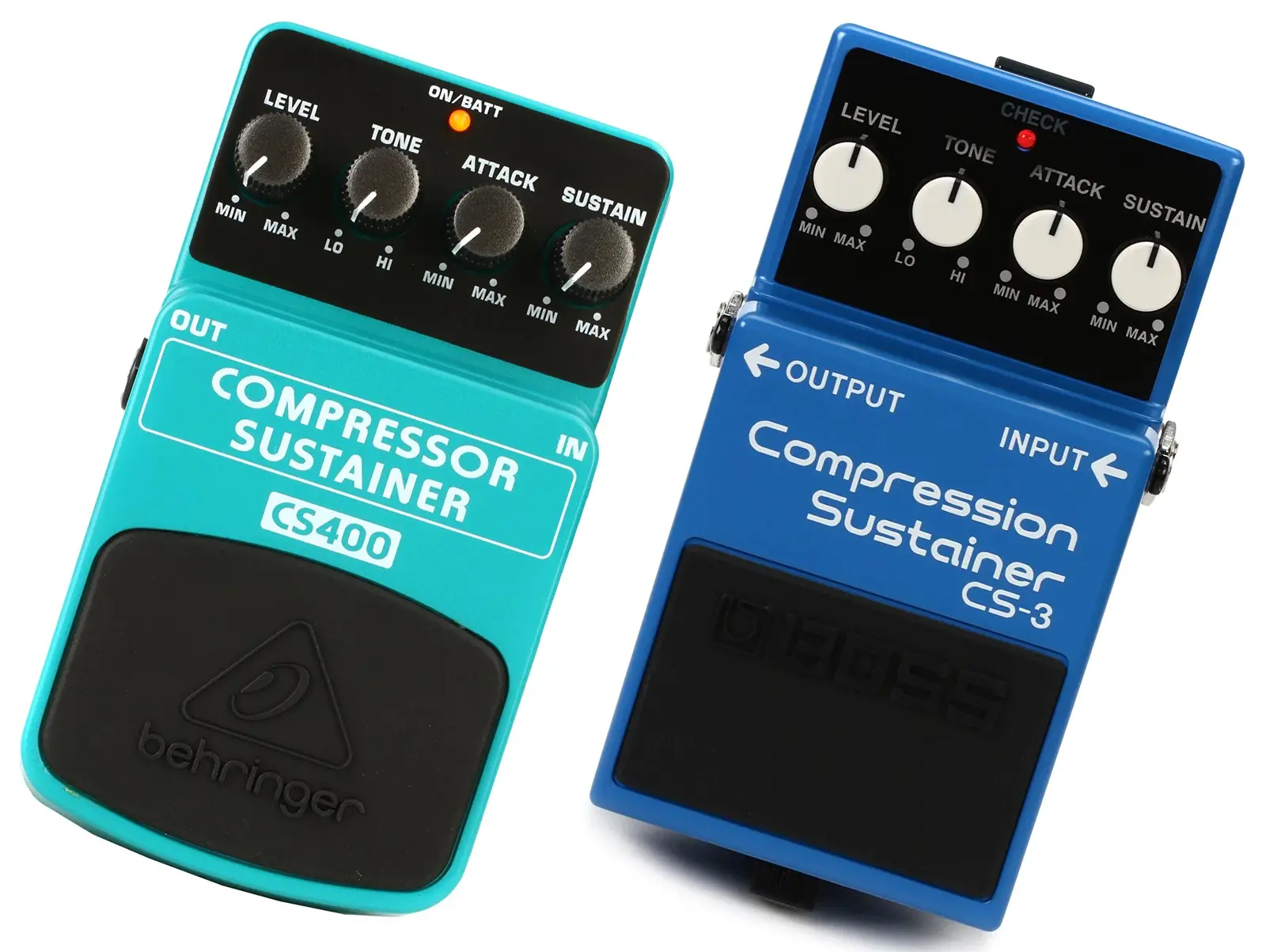For many guitarists, the pursuit of the perfect tone is a lifelong journey. Amid a myriad of gear choices, one tool stands out for its ability to shape and refine your sound: the compression sustainer pedal.
What does a compression sustainer pedal do?
A compression sustainer pedal reduces the dynamic range of a guitar’s sound, making quiet notes louder and loud notes quieter while also increasing the duration of notes or chords, allowing them to ring out longer. This results in a more balanced, consistent sound with extended sustain.
Acting as the unsung hero of many iconic guitar performances, this pedal combines the power of compression and sustain to deliver a well-balanced, consistent tone that can transform your playing experience.
If you want infinite sustain, you need a sustainer.
In this article, we’ll delve into the mechanics of the compression sustainer pedal, how it can increase sustain and even out dynamics, and why it’s a favored staple in genres ranging from rock to jazz.
What Does A Compression Sustainer Pedal Do?
A compression sustainer pedal is a type of guitar effects pedal that is used to modify the sound of the instrument in two main ways:
- Compression: This reduces the dynamic range of the guitar’s signal. In other words, it minimizes the difference between the loudest and softest parts of the sound. This is accomplished by making quiet sounds louder and loud sounds quieter, leading to a more balanced and consistent sound overall. This can prevent sudden spikes in volume and help make the guitar’s sound more controlled and polished.
- Sustain: This increases the duration of notes or chords. Normally, when a string on a guitar is plucked, the sound will naturally fade away or “decay” over time. A sustain effect prolongs this decay, allowing the note or chord to ring out for a longer period of time.
Most compression sustainer pedals allow you to control the level of both compression and sustain. Some also include additional features like tone control (which adjusts the timbre or “color” of the sound) and output level control (which adjusts the overall volume).
A compression sustainer pedal can be a useful tool for guitarists in various genres, including rock, blues, country, and jazz. It can provide a smooth and even tone, enhance the responsiveness of the instrument, and allow for greater control over the dynamics and duration of the sound.
In the above video, the CS400 is off when not shown in the video, and is on when the picture of the pedal shows up.
Does Compression Pedal Increase Sustain?
A compression pedal can increase sustain. Here’s how it works:
When a guitar string is plucked, the sound naturally fades, or decays, over time. This is where the compressor comes in. A compressor limits the dynamic range of a signal, which means it reduces the difference between the loudest and quietest parts of the sound. It does this by quieting the loudest parts and amplifying the quietest parts.
So when a note is played on a guitar with a compressor, the initial loud part (the attack) is quieted, and as the note starts to fade and becomes quieter, the compressor amplifies it. This process can give the impression that the note is lasting longer, thus increasing the “sustain” of the note.
It’s important to note that the degree to which a compressor pedal increases sustain can be influenced by the specific settings used on the pedal, such as the ratio, threshold, attack, and release settings.
Moreover, while a compressor can increase sustain, it might not give the same effect as a dedicated sustain pedal, which is designed specifically to prolong the sound of a note or chord. Some pedals combine both compression and sustain functions for more versatility.

Conclusion
In the world of guitar effects pedals, the compression sustainer pedal holds a distinctive place. Its ability to manage dynamics through compression, coupled with its capacity to extend the life of your notes with sustain, makes it a tool for any guitarist.
It’s no surprise that this pedal has found a home in multiple genres, enhancing performances with its unique sonic contributions.
Whether you’re crafting a searing solo that rings out over the mix or striving for a balanced rhythm part, the compression sustainer pedal can provide the control and consistency you seek.
As s you continue your own personal journey towards the perfect guitar tone, consider the dynamic duo of compression and sustain that this pedal offers.
After all, sometimes the key to sonic greatness lies in the subtle art of balance and prolongation that the compression sustainer pedal so masterfully provides.


